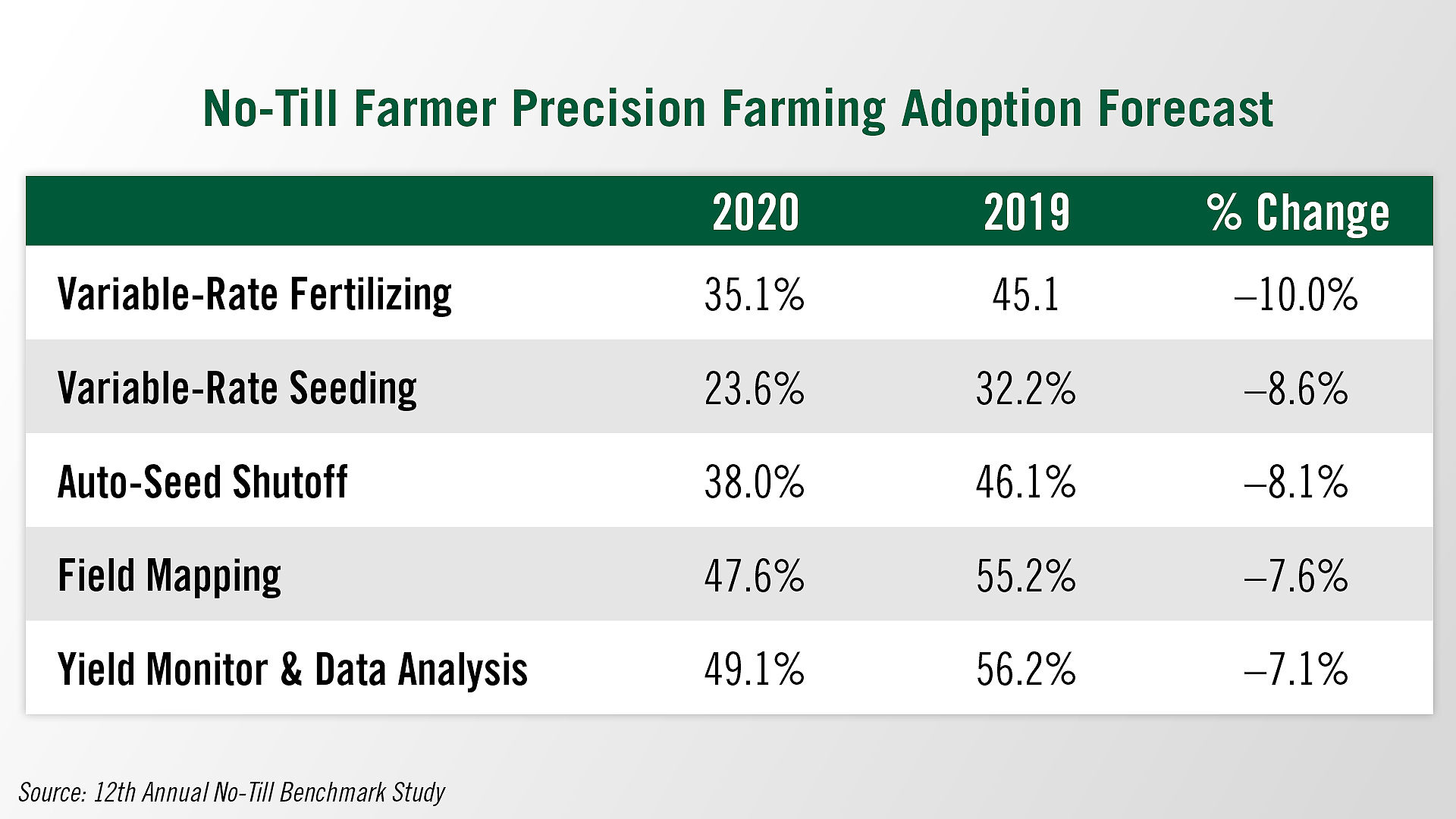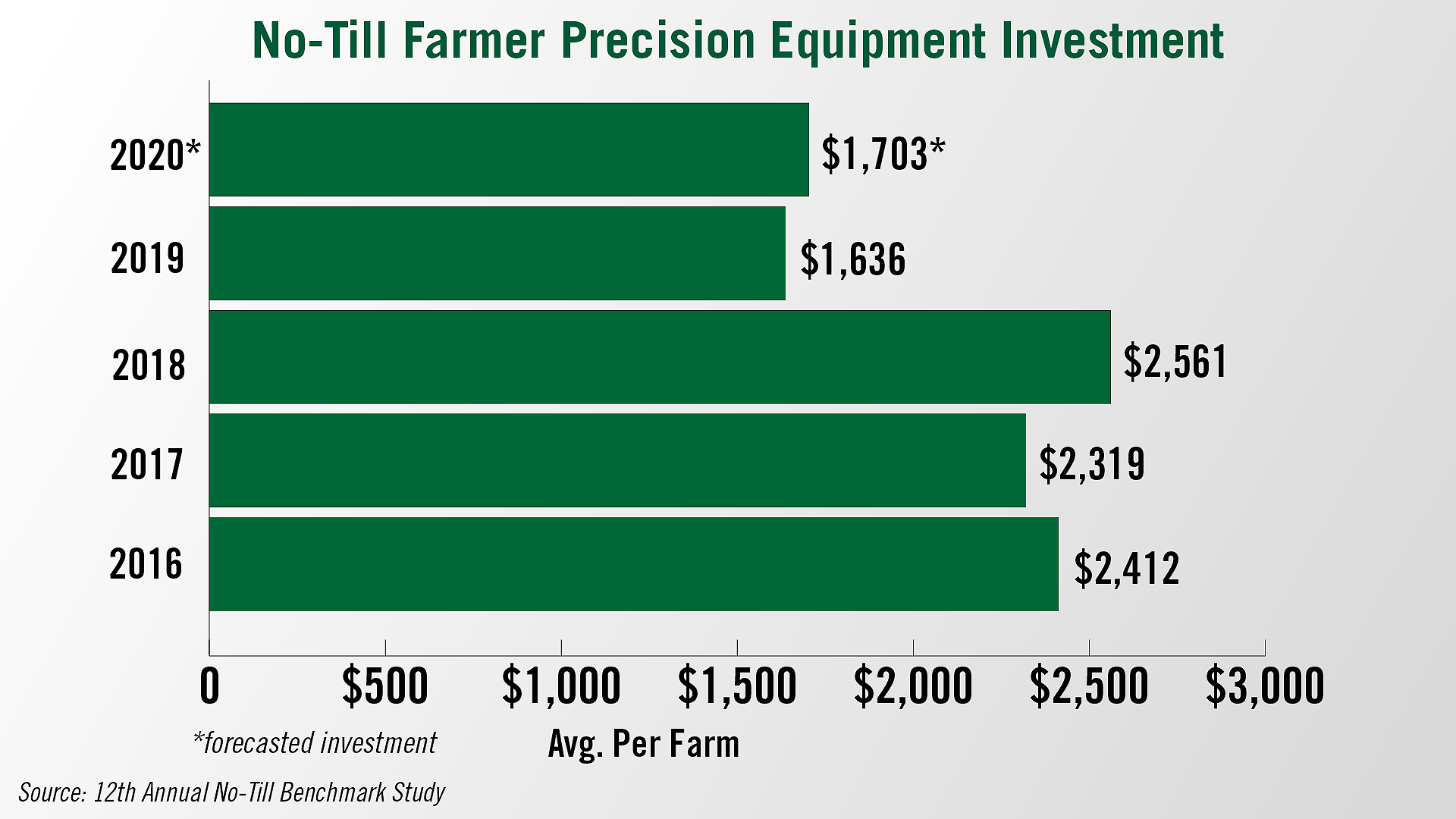By and large, no-till farmers forecast a conservative approach to adding new equipment to their operation in 2020, especially precision technologies.
Results of the 12th annual No-Till Operational Benchmark Study show that farmers generally plan to scale back use of precision farming tools and services on their cropping operations in the coming year. While many of the changes are subtle, the most significant year-over-year shifts are in planned use of variable-rate fertilizing, down 10% from 2019, variable-rate seeding, down almost 9% and auto-seed shutoff, down about 8%.
The lone precision area in which no-tillers anticipate increased application is in remote sensing, with adoption forecast to increase less than 1% in 2020.
So how does the broader adoption of precision practices correlate to no-tillers’ expected spending on technology in 2020? Results of the benchmark study revealed that on average, respondents are planning to invest about $1,700 per farm on ag technology. This total is about $900 less than what no-tillers initially forecast in 2019, but about $100 more than the actual per farm average of just over $1,600 reported in this year’s benchmark study.
A category added in 2018 tracks precision service expenditures with respondents spending an average of just over $3,000 per farm that year. The total declined to just under $1,800 in 2019 and forecast to decrease again in 2020 to about $1,400.
However, it’s worth noting that survey projections made at the start of the year, don’t always coincide with end of the year totals and historically, actual precision expenditures have exceeded initial projections.



![[Technology Corner] Autonomy & Robotics Take Center Stage](https://www.precisionfarmingdealer.com/ext/resources/2026/01/12/Autonomy--Robotics-Take-Center-Stage.webp?height=290&t=1768253759&width=400)


